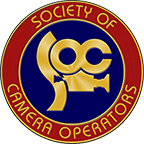
If you’ve been around a shooting location or in a studio—or if you’re the subject of a video shoot, you may have heard terms flying around that you didn’t recognize. So here is my attempt to “decode” some of these terms for you. This list is by no means complete, but provides some basic insight for the next time you’re around—or in front of—a camera! If you’re a nerd and want to know more, just Google “video (or film) glossary” and have a ball!
Aperture is the size of the opening within your lens that allows light onto the image sensor. Aperture is measured by f-number or f-stops.
Bokeh describes the character of the blur in an image, often used to specifically refer to points of light rendered as fuzzy circles. Bokeh also refers to a more romantic form of imagery, often used in wedding videography.
Boom microphones (“Shotgun” mic) are long, highly directional microphones. They are normally attached to boom poles to capture dialogue in a scene. They also can be mounted directly on cameras to capture long distance sound.
Closeup (CU) A tightly framed camera shot in which the principal subject is viewed at close range, appearing large and dominant on screen. Pulled back slightly is a “medium closeup” while zoomed in very close is an “extreme closeup (ECU or XCU).
Composition Visual make-up of a video picture, including such variables as balance, framing, field of view and texture all aesthetic considerations. Combined qualities form an image that’s pleasing to view.
Depth of field Range in front of a camera’s lens in which objects appear in focus. Depth of field varies with subject-to-camera distance, focal length of a camera lens and a camera’s aperture setting. See “Bokeh.”
Establishing shot Opening image of a program or scene. Usually, it’s a wide and/or distant perspective that orients viewers to the overall setting and surroundings.
Gaff tape (or gaffers tape) is a type of non-damaging, super durable tape used on film sets, most often by the gaffer and grip department. NOT duct tape!!
Headroom Space between the top of a subject’s head and a monitor’s upper-screen edge. Too much headroom makes the subject appear to fall out of the frame.
Lavalier (or “lav”) microphone is a small clip-on microphone that attaches to the subjects clothing. Normally used on TV newscasts or variety shows that require sound to be captured from the subject without it being obvious that there is a microphone attached. Lavs and shotguns are the two most-used microphones in my audio kit.
Long shot (LS) Camera view of a subject or scene from a distance, showing a broad perspective.
Medium shot (MS) Defines any camera perspective between long shot and closeup, viewing the subjects from a medium distance.
Nose room The distance between the subject and the edge of the frame in the direction the subject is looking. Also called “look room.”
Over-the-shoulder shot View of the primary subject with the back of another person’s shoulder and head in the foreground. Routinely used in interview situations.
Pan Horizontal camera pivot, right to left or left to right, from a stationary position.
Pedestal A camera move vertically lowering or raising the camcorder, approaching either the floor or the ceiling, while keeping the camera level. NOT a tilt.
Point-of-view shot (POV) Shot perspective whereby the video camera assumes a subject’s view and thus viewers see what the subject sees.
Rack focus Shifting focus between subjects in the background and foreground so a viewer’s attention moves from subject to subject as the focus shifts. Watch for this move the next time you’re watching a TV show or movie!
Two-shot A camera view including two subjects, most generally applicable to interview situations. Add one person and you have a Three-shot!
Tilt Vertical camera rotation (up and down) from a single axis, as on a tripod.
Tracking Lateral camera movement that travels with a moving subject. The camcorder should maintain a regulated distance from the subject. NOT a pan.
Whip pan (swish pan) Extremely rapid camera movement from left to right or right to left, appearing as an image blur. Two such pans in the same direction, edited together one moving from, the other moving to a stationary shot can effectively convey the passage of time or a change of location.
Zoom shot makes the subject larger or smaller within the frame simply by shifting the lens elements inside to change focal lengths. This magnifies the view of the subject while the camera itself remains stationary. A Snap Zoom is a very rapid zoom move, intended to convey energy.












